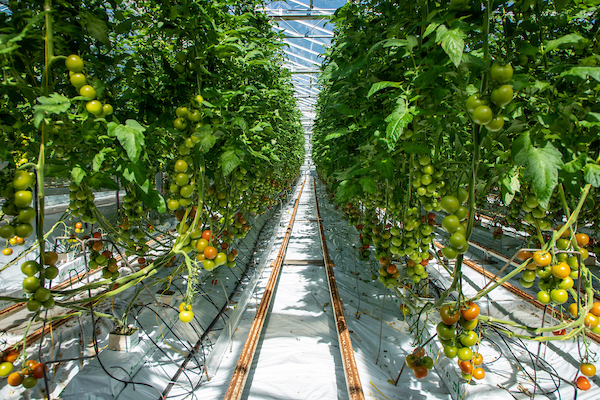Please click here to access the main AHDB website and other sectors.
- Home
- Knowledge library
- Tomato: An investigation into poor pollination performance by the native bumblebee, Bombus terrestris audax
Tomato: An investigation into poor pollination performance by the native bumblebee, Bombus terrestris audax
These pages summarise AHDB-funded research, which had the goal of reducing financial losses for growers following the legislated change from non-native (Bombus terrestris terrestris [Btt] and Bombus terrestris dalmatinus [Btd]) to native (Bombus terrestris audax [Bta]) bumblebees for the pollination of UK tomato crops.
History of biological pollination in UK tomato crops
British tomato growers had used bumblebees to successfully pollinate their crops for over two decades before legislation forced change to a native subspecies in 2015.
Read about the history of biological pollination
Financial implications of poor fruit set in UK tomato crops
Read about how the change to native subspecies was associated with poor fruit set and, in some cases, resulted in significant financial losses.
Find out about the financial implications of poor fruit set
Pollination surveys of UK tomato production sites
Growers representing 98% of the UK tomato production area contributed to pollination surveys. This unprecedented response illustrated how concerned the growers were about this issue.
Read about the pollination surveys
Are there risks from pollinating crops with commercial bumblebees?
Following a comprehensive review of the literature, Chandler et al. (2019) concluded that there was insufficient reliable and consistent evidence to support claims that the use of Btt/Btd was harmful to wild populations of B. terrestris in the UK. Questions are raised about the current classification of B. terrestris subspecies.
Lean more about the potential risks
Bombus terrestris colony development in tomato crops
Bta colonies generally went into decline soon after placement in tomato crops. This was in stark contrast to experience with Btt/Btd.
Learn about colony development
Tomato flower structure and fertilisation
It is useful to describe the structure of the tomato flower and the process of fertilisation as this is critical to understanding the process of fruit set.
Read about tomato flower structure and fertilisation
Fruit set and pollen viability
Studies are in progress to learn more about fruit set in cv Piccolo and, in particular, the possible impact of high temperature on pollen viability in that cultivar.
Learn about tomato fruit set and pollen viability
Bta activity in tomato crops and natural habitats
Our results indicate that Bta colonies placed in tomato crops do not ‘take-off’ in terms of rearing brood and producing new foragers in the same way that colonies normally do when held outside under more natural conditions.
Find out about Bta activity in tomato crops and natural habitats
Effect of high temperature on within-hive activity of B. terrestris
Bombus terrestris collectively thermoregulate their nests in response to cold and heat in order to maintain a relatively constant temperature for brood rearing. Find out about the effect of high temperature of within-hive activity and whether there is a difference between Bta and Btt/Btd.
Read about the effect of high temperature on within-hive activity
Remote monitoring of activity in Bta colonies
A system is being developed to remotely monitor bumblebee activity within hives which can be used both as an experimental tool in future studies and as an aid to the management of Bta in commercial crops.
 Gary Naylor Photography
Gary Naylor Photography
Useful links
Got a question? Ask a member of the team
Read the full research reports on this topic:
Authors
The content of these pages was authored for AHDB by Dr Rob Jacobson (Rob Jacobson Consultancy Ltd), Dr D Chandler, Mrs G Prince, and Dr K Cocksull.
Disclaimer
This information on this page and the linked pages is correct and up-to-date as of March 2022.
While the Agriculture and Horticulture Development Board seeks to ensure that the information outlined on these pages and in the project reports is accurate at the time of publishing, no warranty is given in respect thereof and, to the maximum extent permitted by law the Agriculture and Horticulture Development Board accepts no liability for loss, damage or injury howsoever caused (including that caused by negligence) or suffered directly or indirectly in relation to information and opinions contained in or omitted from this information.

